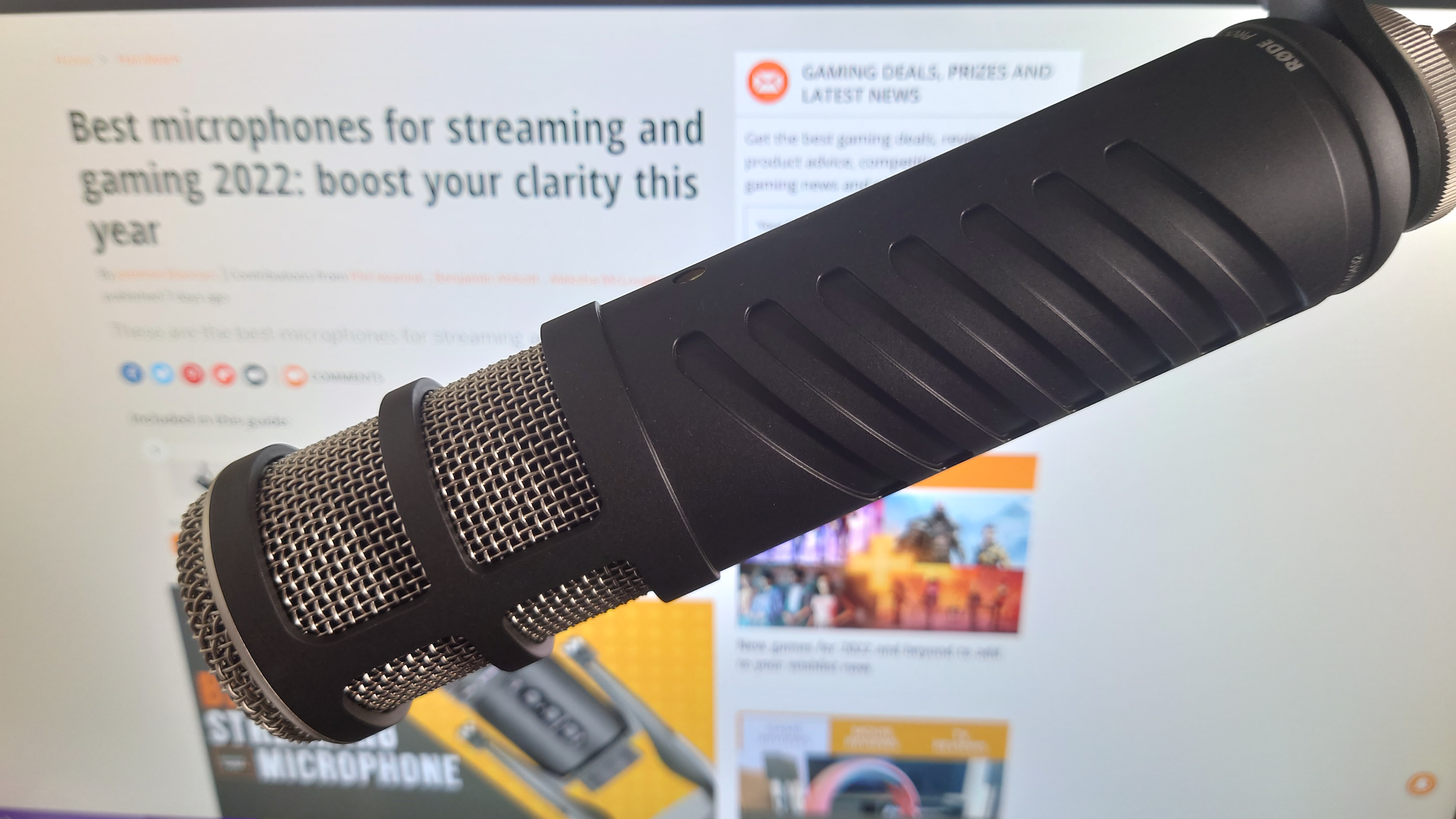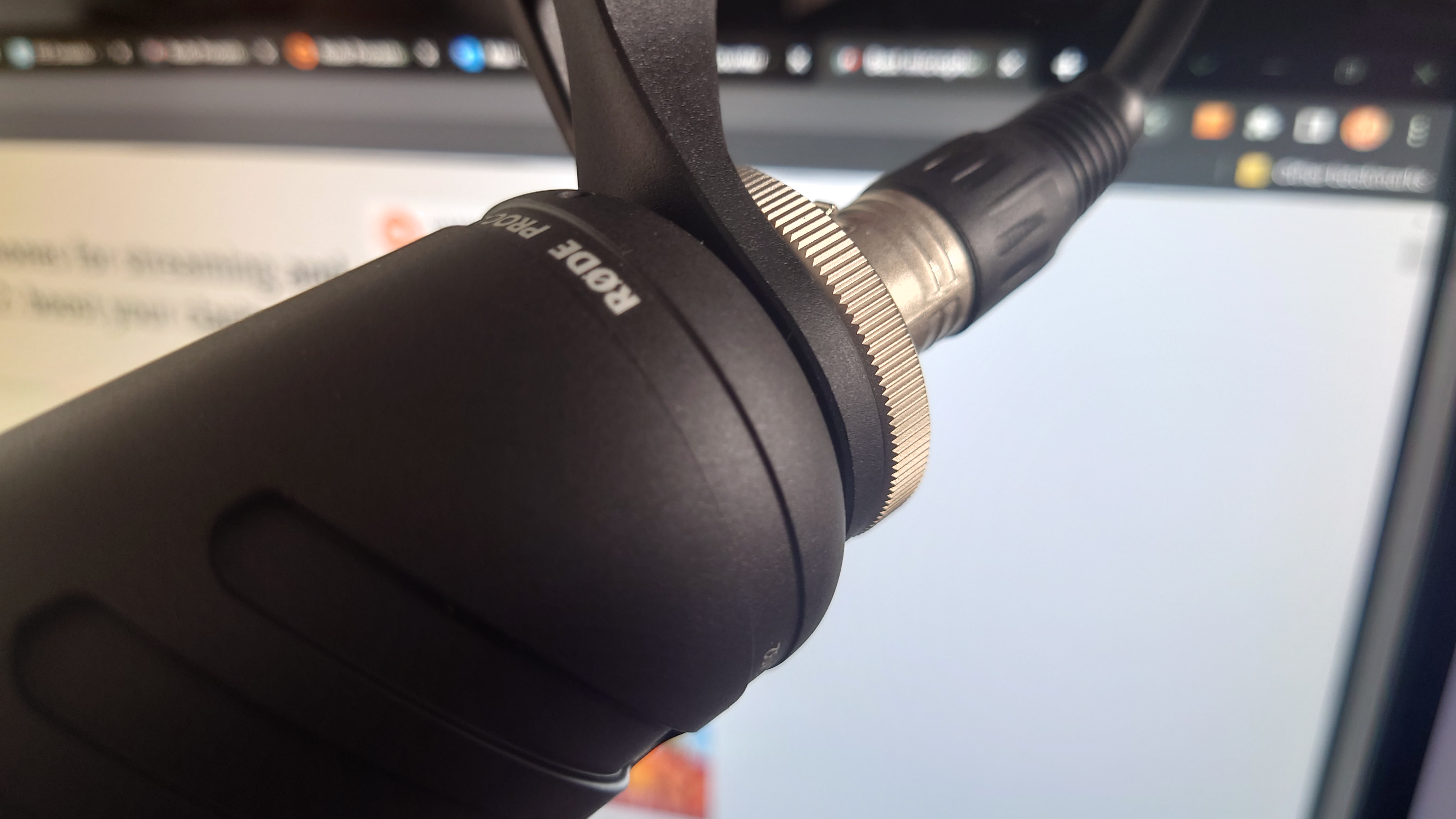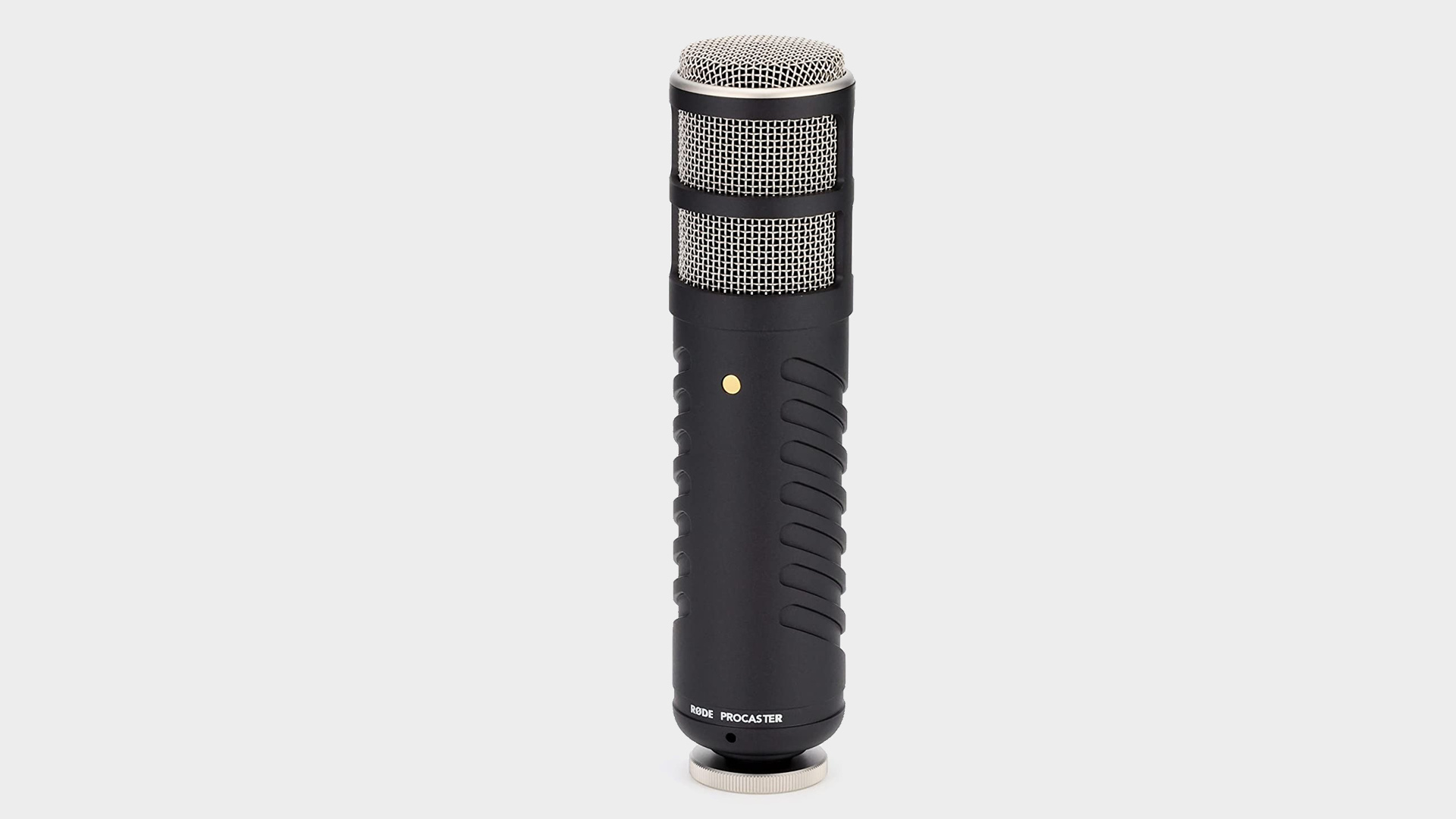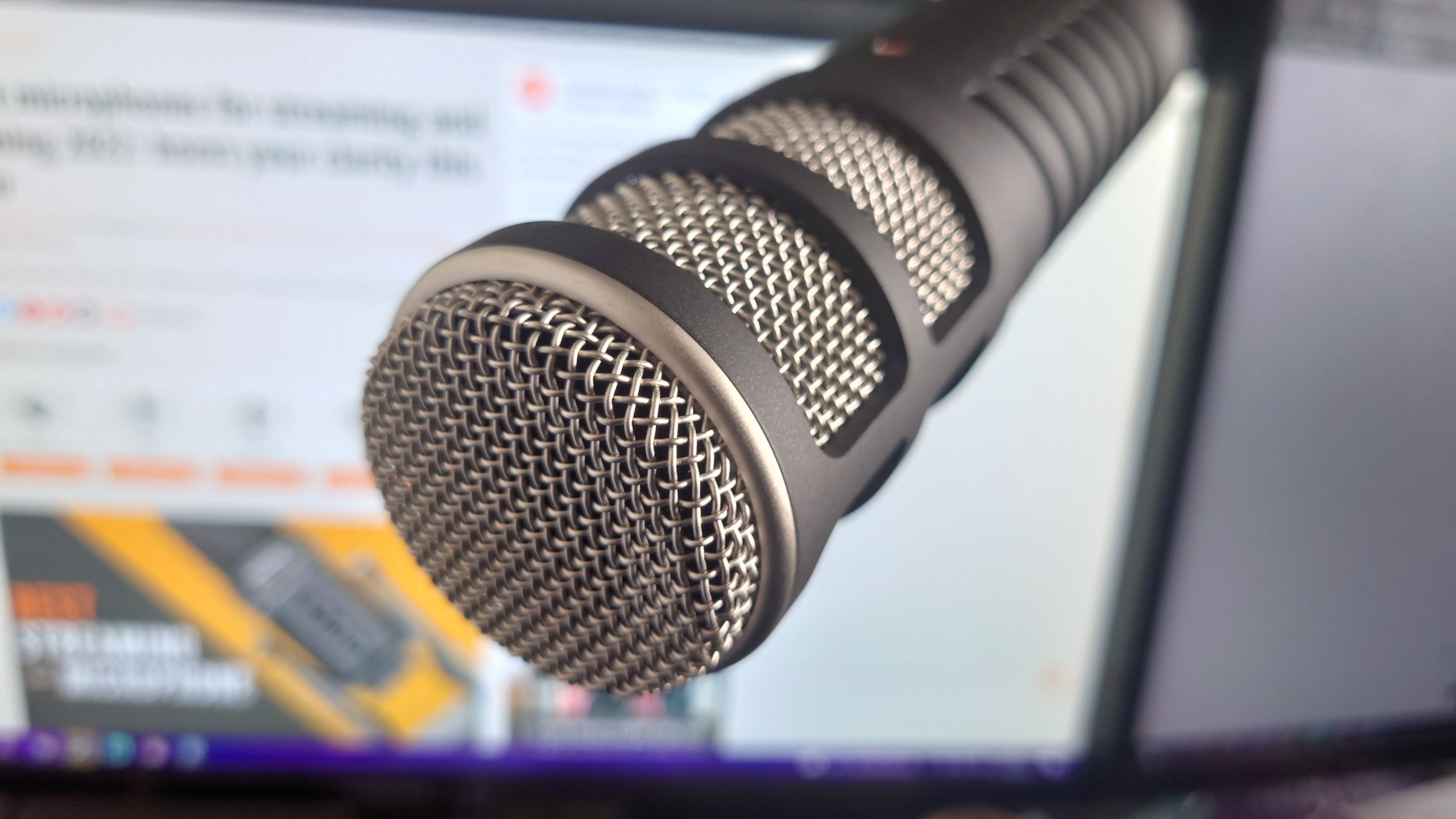GamesRadar+ Verdict
The Rode Procaster offers broadcast quality sound that's perfect for live streamers, and podcasters alike all contained in a premium all-metal chassis. For those wanting range and dynamic functionality in real-world use, there's little more you can want at this competitive price point.
Pros
- +
Outstanding build quality
- +
10-year warranty
- +
Exceptional audio profile
- +
Rode mount included in the box
Cons
- -
You'll need a stand or swing arm
- -
A dedicated shock mount is recommended
Why you can trust GamesRadar+
The Rode Procaster aligns itself somewhere between entry-level and enthusiast from a pricing point of view but no compromises are made. Armed with premium sound quality, premium construction, and a wide array of mounting options, this is easily one of the best microphones for streaming for those wanting dynamic options.
If you're serious about forging a high-end streaming for gamers setup then this mic has you covered for a wide variety of situations.
Design and Features
The Rode Procaster certainly lives up to its 'pro' mantle when the physical design is taken into consideration. Unlike the smaller Rode PodMic XLR microphone, this model forgoes the compact approach and instead opts for a full-size broadcaster length unit. The visual language may make this model admittedly a little less distinct to the eye than its smaller sister, however, there's no denying that the size and weight (1.64 lbs / 744g) of the thing adds a premium touch overall.
Aside from the microphone head itself, you've got a thick barrel body with scored ridges machine carved into the all-metal casing. It's a very pleasing build despite not being the most exciting-looking mic. The way the Rode Procaster connects to swing arms and desk stands, such as the company's PSA1+ or DS1, is wonderfully intuitive though which is a nice feature.
I opted for the former in my testing, which was simple to install thanks to the included mount in the box which screws into the top of the arm. If you're already immersed in the Rode ecosystem then you'll be right at home here, thanks to the included accessory - though this microphone should fit a wide range of different boom arms and microphone stands.
Included in the box is a leather pouch to store the Rode Procaster when not in use which comes with a gel pouch to protect your microphone from the elements. If you're someone who plans on touring around with this bit of kit then it's a handy inclusion to keep the unit clean, too.

Performance
One thing that instantly struck me as quite surprising is that the Rode Procaster doesn't necessarily require 48V Phantom Power as it's a dynamic mic and not a condenser one. In my testing, I did experiment with my audio interface of choice between these two different settings and found both setups to produce a warm, rich, and balanced audio profile with either configuration. This means that whether you've got your hands on the almighty Rodecaster Pro II interface, the more humble out Rode AI-1, or a basic interface from another brand you've got a wide array of options open to you.
Generally, a dynamic microphone is better at picking up louder sounds, such as vocals and guitar playing for example than a standard condenser and this is arguably the greatest strength that the Rode Procaster benefits from. As a metal musician, I put both the PodMic and this model to the test and found that the Procaster did sound the most accurate of the two; if you're someone who wants a microphone for singing, harsh vocals, and louder sounds then you'll find it here.
Unlike some cheaper dynamic XLR microphones that I've had in the past, which have typically suffered from background noise issues, the Rode Procaster has no such ailment. This is due to the 75Hz - 18kHz frequency range and -56.0dB sensitivity, which meant that quieter speaking voices came in crystal clear just the same as louder ones, meaning you should be fully covered when live streaming through in various animated states.

While the internal shock mount does a good job of filtering out any rumbles or vibrations, I would argue that a dedicated shock mount, such as the brand's PSM1 (priced at $39) should be considered if you are going to use a boom arm. Due to the weight of the Rode Procaster, it does hang a little lower than the PodMic in operation, and some unwanted noise, however minor, can come through when the unit is moved. The company's promotional material featuring this microphone does feature the PSM1 and the PSA1+ together in tandem, so the extra expense here would mitigate this small issue. I should reiterate that there is the smallest amount of noise in movement unlikely to be picked up in operation, but it's definitely something to be aware of.
One thing is for sure above all else, though, and that's that the sound profile of the Rode Procaster stands head and shoulders above USB microphones that I had for comparison including the Rode NT-USB, Blue Snowball, and Joby Wavo Pod, too. This model may not be as convenient to set up as you'll need a dedicated audio interface with at least one XLR input, but the benefits of which really are night and day for those wanting to stand out in the online content creation sphere.
Should you buy the Rode Procaster?

The Rode Procaster offers incredible performance, outstanding quality, and functionality all for a competitive $170 / £170 asking price. Considering that the closest possible direct competitor, the Shure SM7B, costs nearly double this rate while offering similar functionality, then the Rode Procaster stands out as a fantastic value proposition all told.
You are going to need an interface as with any XLR mount, and I would recommend a dedicated shock mount here as well which will be an additional investment. However, all things considered, there's very little that this fully-featured dynamic microphone cannot achieve. Whether you're a podcaster, aspiring live streamer, or a musician wanting a little more out of their setup, you'll be in good hands with this model.
How we tested the Rode Procaster
I used the Rode Procaster for just over a week as my main XLR microphone of choice hooked up to my Behringer U-PHORIA UMC202HD attached to the Rode PSA1+ boom arm. With this setup, I tested the microphone in audio programs such as Audacity and Reaper for tracking vocals, as well as using it in conversations with friends and family. Testing was also conducted inside of OBS and Streamlabs.
You can find out more about our approach to testing tech in the full GamesRadar Hardware Policy.
Make the most out of your Rode Procaster with the best ring lights, best green screens, and best webcams to create a top-tier streaming setup.

Aleksha McLoughlin served as the Hardware Editor for GamesRadar from June 2021 until August 2022. Her main area of expertise was the PC gaming platform, which comprised buying guides, features, reviews, and news coverage on components and prebuilt machines. She was also responsible for gaming chairs and storage. She now works on a freelance basis while studying to become a university lecturer specializing in English for foreign territories. Prior to joining GamesRadar, she wrote for the likes of Expert Reviews, The Rory Peck Trust, No Clean Singing, Vinyl Chapters, and Tech Spark while also working with the BBC.




